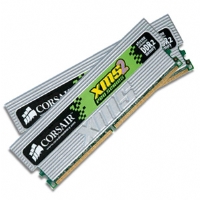Computer Memory (RAM)
How much RAM memory is enough for new desktop computer?
RAM determines how many programs you can run efficiently at the same time on your computer. So how much RAM memory is enough for new desktop computer to run well?
At the most basic 128MB will do. This is the basic requirement for Windows. It will allow you to run a word processor and a web browser. However, newer versions of Windows require more and more memory, so more of what you have is already used up by the Operating System (Windows) once the computer is on.
For this reason I recommend at least 256MB of RAM, but I would not get less than 512MB. It will allow you to run the programs you need to.
One of the reasons that Windows can get very slow is “virtual memory”.
Virtual memory allows Windows to pretend that it has more memory than it does. Windows itself manages what things are put into memory at what times, so in order to give you more memory, it can use part of the hard drive and pretend that it is memory. This works fine, and you can run more programs, but the speed of a hard disk is way below that of the main memory, and so speed suffers as programs read and write their information to the hard disk.
So despite the benefits of virtual memory, it definitely has it’s down side. However, as the total of all the programs use doesn’t usually come to more than 512MB (in my case and others) that is my recommendation. So how much RAM memory is enough for new desktop computer depends on you and your needs, just stick to the guidelines above.

Corsair Pro TWINX 1024MB PC5400 Dual channel DDR2 667MHz
Explain DDR memory
First off to explain DDR memory is to know what DDR stands for. DDR is short for “Double Data Rate SDRAM” This kind of memory is the most popular in computers nowadays, it’s price is right, and it faster than the old SDRAM, which will not fit in most modern motherboards that consumers buy for home desktop systems.
DDR ram has 184 pins, which can be identified as the thin copper strips on the memory module where it slots into the motherboard. There is not too much to explain DDR memory, but this became the memory of choice because of it’s good value for money and basically took over because it was what consumers wanted.
DDR comes in a few varieties, all to do with speed.
- 266MHZ, also known as PC266 / PC2100
- 333MHz, also known as PC333 / PC2700
- 400MHZ, also known as PC400 / PC3200
- and faster…
The speed of the memory needs to match up with the speed of the bus that your processor and motherboard support. However, you will need to get faster computer memory than you need if you plan to overclock your computer.
DDR timing
DDR timing has to do with how fast the memory is in terms of it’s internal bits and pieces. If you are not an overclocker this might just be useful information, as the performance difference can be small, but is useful for finding quality memory.
Within a memory stick there are what amount to tables where information is stored. The parts that access and write to these blocks on the table take time to get set on and read from. This time is called the latency. The lower the latency, the quicker that block of the table can be accessed or changed to read another.
Cheap memory comes with the slowest latencies, which makes the memory a little slower. This has little effect for normal use. The main concern for this has always been games. However, better timings can point to higher quality memory, as it needs to be better to achieve those timings.









